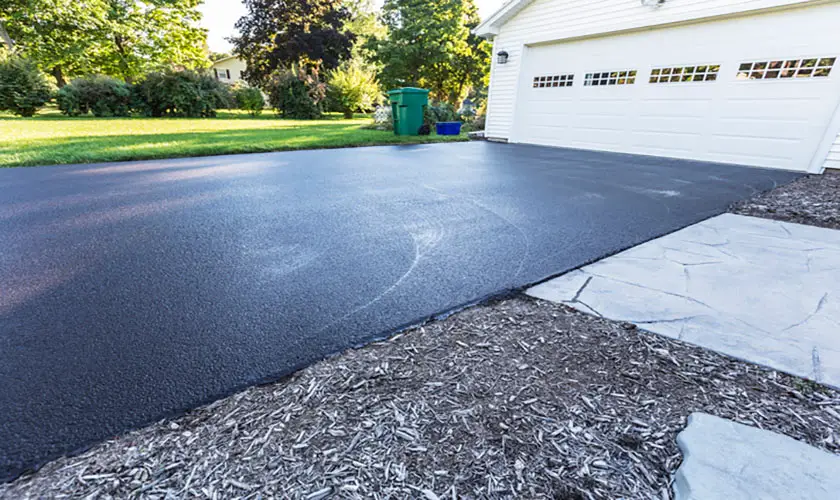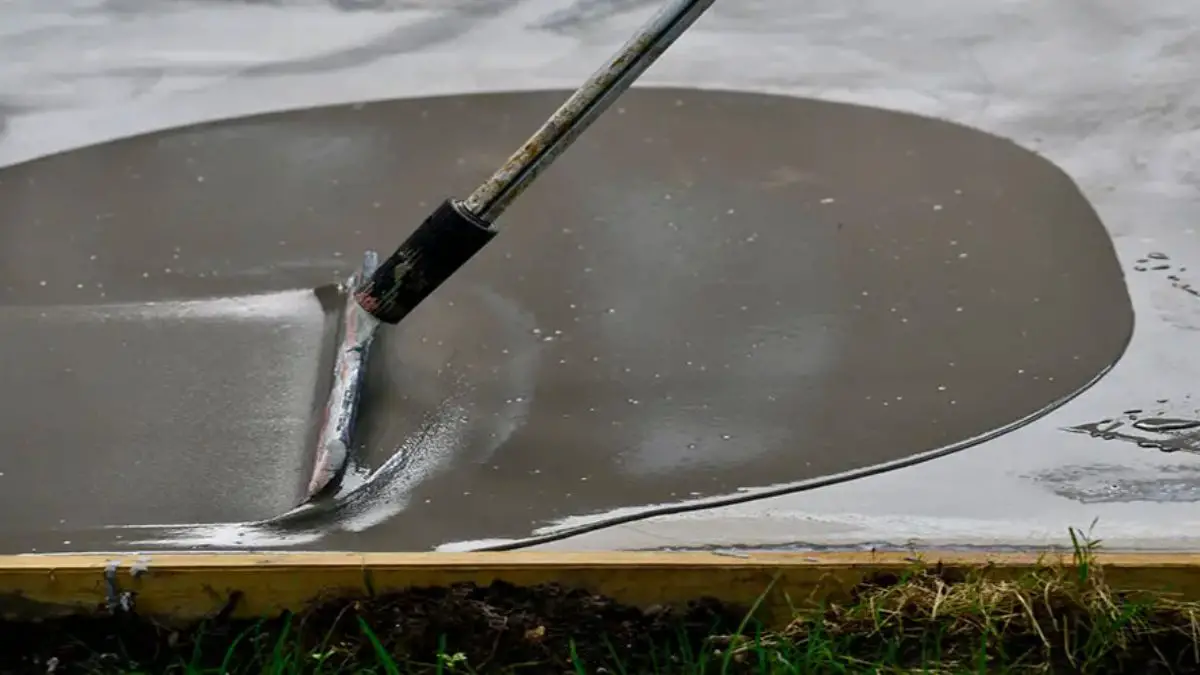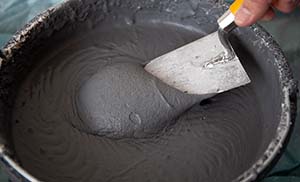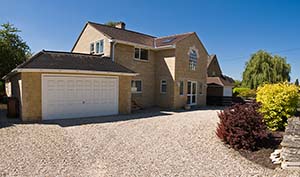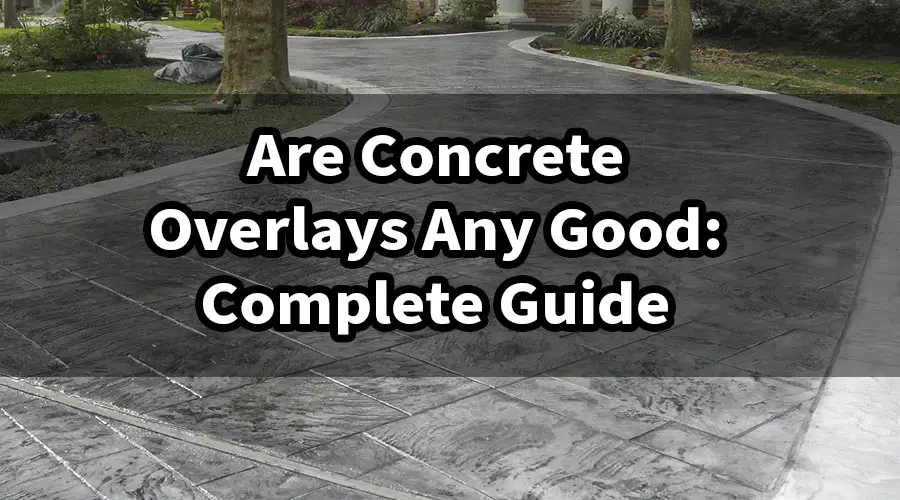
Concrete overlays are a great way to resurface concrete and date back to the early 1900s. They were used then, as they are now, for repairing concrete surfaces. But the fact that they are centuries old doesn’t automatically mean you should consider them. The question here is: Are concrete overlays any good?
Concrete overlays are an excellent way to resurface old concrete because they are strong, durable, and decorative. Concrete overlays are to the floor what a fresh coat of paint is to a wall.
This guide will discover what makes concrete overlays good and what to consider when you opt for them.
Is A Concrete Overlay Any Good?
Concrete overlays can transform a dull floor into a fresh canvas. Here are additional advantages that make concrete overlays good:
1. They Offer Beautiful Designs
Concrete overlays come with a decorative element to them. They can enhance the appearance of your floor by infusing several creating aspects.
For example, a concrete overlay can give the floor a modern, geometric design, or it can turn your floor into a cobblestoned surface.
Also, if you do not want any decorative elements, you can keep it simple with a concrete overlay to reduce surface roughness.
2. They Offer A More Straightforward Installation
You can have a thinner floor with concrete overlays, meaning you do not have to worry about making significant changes to the subfloor.
Removing the subfloor could mean interfering with other installations like the HVAC, door frames, floor joists, window frames, and baseboard.
That ends up raking up the bill for a new floor.
Using concrete overlays, you can go as thin as ¼ inch thin on a new floor, and you do not even have to make significant modifications to existing aspects of your structure.
Plus, it is just as easy to get rid of the floor. You do not have to remove it; you can lay tiles, carpet, linoleum, and wood over it.
3. Concrete Overlays Are Affordable
A standard concrete overlay will cost between $3 and $7 for one square foot. On the other hand, a basic tile for the same footage is $15 to $20. Ceramic tiles can go up to $35 per square footage for installation.
The concrete overlay’s cost increases when considering the textures or embeds and other design elements added to the concrete. But even then, the price is significantly lower than installing a high-end ceramic tile to achieve the same final aesthetic.
Besides, installing a concrete overlay can be done over another floor, including over tiles. That cuts down the cost of removal and clearing the surface.
4. The Overlays Are Durable
Unfortunately, ceramic, porcelain, and other tiles are not as durable as concrete overlays. They break easily, unlike concrete which can withstand a lot of damage and still offer a long service life.
These overlays cannot break because they feature a penetrating sealer that makes them resistant to scuffing and staining.
As long as you maintain the sealer, you can keep the overlay floor looking the same for decades. Also, a concrete overlay is low-maintenance, unlike wood and other materials. It can withstand being mopped, swept, pressure washed, or scrubbed with a medium bristle brush.
Remember, an option like ceramic is clay, water, powders, and other earthen elements mixed then fired in a kiln over high temperatures. It is a delicate choice of floor material.
5. Concrete Overlays Are Environment-Friendly
Concrete overlays are an environment-friendly choice compared to options like wooden floors. These overlays are made from sand, gravel, water, and cement. All these are naturally occurring elements that are recyclable and can disintegrate without harming the environment.
For example, cement comes from clay which is readily available earth that is not commonly used for farming. Sand and gravel are also not agricultural soils. Using these materials to make concrete is putting them to good use.
On the other hand, wooden floors require cutting trees to get the wood needed for the floor. That is not only unsustainable but also very dangerous for the environment.
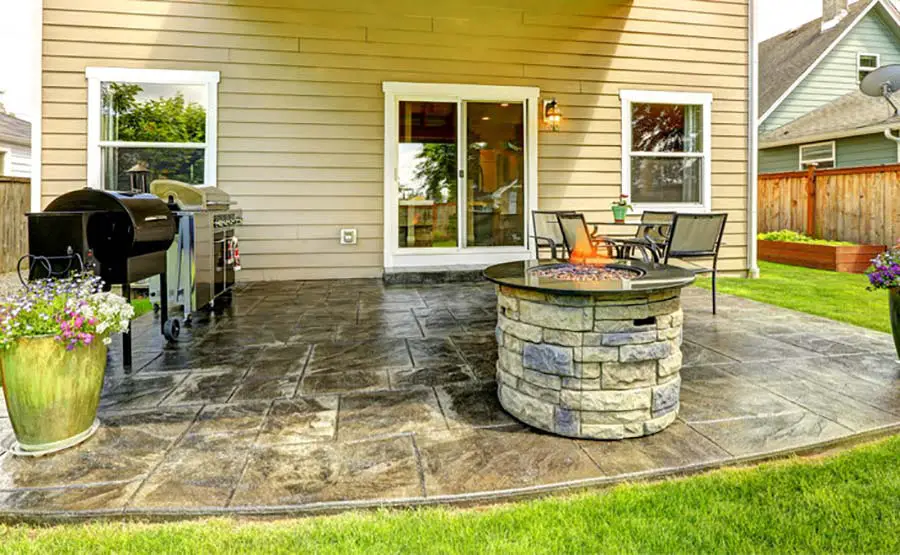
Do Concrete Overlay Crack?
One of the biggest challenges of working with concrete products is the tendency of the material to crack. But that only happens if you lay the concrete overlay over an existing surface that is cracked or structurally compromised.
For example, the surface may have patches, expansion gaps and joins, wide cracks or cracks with one side raised and another lower. Identify these problem areas and repair or fix them before you lay the concrete overlays.
That will enable you to avoid cracks in the overlay.
Also, ensure that the slab on which you lay the concrete overlay doesn’t retain moisture. The concrete overlay is non-breathable, and any moisture vapors from below will lift it clean off the slab leading to cracking.
To prevent moisture problems, ensure that you treat the base concrete with a waterproof, non-breathable coating.
Finally, make sure that you do not apply the overlay too thick because that will also cause cracking.
How Thick Should Concrete Overlay Be?
The recommended thickness of a concrete overlay should be between 1 and 2 inches. Some people will even go to ¼ of an inch in thickness, which is still sufficient depending on your needs.
If you place a 2-inch overlay, you need a very rough surface on the existing slab. Ensure the surface is rough enough.
For thinner overlays, you do not need to roughen the underlying slab too much. The following tips will help you get the best overlay thickness for the different applications:
- 1/16 to 1/8 inches thick for resurfacing interior concrete floors
- 1/8 to 3/8 inches thick for resurfacing concrete patios, driveways, or pool decks
- 1/4 to 2 inches thick when doing a self-leveling overlay
- 1/8 to 2 inches thick when laying self- leveling underlays
How Long Do Concrete Overlays Last?
A concrete overlay can last as long as 20 years with the correct maintenance. In addition to overall care, one should properly seal the overlay.
For the sealing to last, you should ensure that you reseal the overlay every five to seven years.
Another critical factor that determines how long the overlay will last is the surface you apply it to. If the slab is cracked or severely damaged, the concrete overlay used to resurface the slab will also begin to crack with time.
To ensure the overlay adheres to the surface underneath it, clean the underlying surface properly to be free of dust and other debris. You can do that effectively using pressure washing to get all the dust and grime off the surface.
Finally, give your concrete overlays a chance to last a long time by installing them when the temperatures are ideal. Temperatures of between 40 and 60 degrees Fahrenheit on a cool day are excellent for applying concrete overlays.
If you apply the overlay when temperatures are below 40 degrees, the necessary chemical reactions that strengthen the concrete will slow down, significantly weakening the concrete. That means that the overlay will not last for long because it is susceptible to cracking.
High temperatures are no better.
According to the American Concrete Institute, high temperatures coupled with low humidity and high winds will cause the water in the concrete to evaporate during curing, leaving the overlay vulnerable to shrinkage and cracking even before the concrete sets.
Hot temperatures and low humidity also increase the water to cement ratio, which in turn causes the concrete to have lower strength.
As a result, the overlay cannot endure human traffic and damage from furniture or other heavy items.
Before you lay a concrete overlay, it is critical to check the
- Water temperature
- Ambient temperature
- The temperature of the materials to be used
- Substrate surface temperature
Types Of Concrete Overlays
There are 4 main types of concrete overlays.
1. Stampable Overlays
The stampable overlays are applicable both indoors and outdoors. They give the concrete an appearance of tile, wood, stone, or brick.
Depending on the pattern you choose, the overlay will be ⅜ to ¼ inch thick. At the very most, the thickness will be ¾ of an inch for a design that needs more depth spread.
Stampable overlays can be stained because they utilize cement which takes colors very well. It will last for years but needs resealing to maintain its aesthetic and durability.
The advantage of stamped concrete overlays is their ability to allow you to mimic other materials without replacing your concrete. These overlays are usable over existing concrete and even walls.
The stamped overlay is more expensive than the rest because of the variety of imprints and designs it offers users.
Places where stamped overlays apply:
- Floors
- Pool decks
- Driveways
- Walkways
- Patios
2. Concrete Micro-Topping Overlays
This type of overlay is used to achieve decorative concrete surfaces. It is a thin-set topping, almost like the icing on a cake.
With micro-topping overlays, they are not only thin but are also stainable on the surface or all the way through.
Microtopping overlays come in handy when you want to rework the surface and rejuvenate it. They cover over cracked or chipped surfaces and turn a plain surface into a decorative one.
Like stamped overlays, micro-toppings also can mimic other materials like wood, stone, brick, marble, granite, and tile.
The thickness of micro-topping overlays is as thin as 1/16 of an inch. The maximum depth of the overlay is one inch. Because the topping is so thin, it can be applied using a squeegee.
Unfortunately, because they are so thin, they cannot be polished.
Places where concrete micro-topping overlays apply:
- Patios
- Driveways
- Floors
- Pool decks
- Water parks
- Parking garages
- Countertops
3. Self-Leveling Concrete Overlays
These overlays work best for uneven and rough surfaces. They are excellent for severely damaged surfaces that look unredeemable.
Using self-leveling concrete overlays is more straightforward than pouring new concrete. You pour or pump the overlay onto the surface you need to resurface and distribute it evenly using a spreading item.
The secret lies in the consistency of the self-leveling concrete. The consistency should allow the overlay to spread out on its own and be applicable using something as basic as a metal squeegee.
This type of concrete overlay has a short window to work with because they cure fast. Once you pour, you work it quickly and leave it because overworking the overlay will ruin the consistency and leave weak spots on the surface).
Ensure that you follow the manufacturer’s instructions to the letter when mixing the components that make up the overlay. That is because the components include chemicals and leveling agents. The average self-leveling overlay has between 10 and 20 ingredients that mix, resulting in hard-cured concrete within hours or days. In some cases, you can even be walking on the topping in a couple of hours.
Opt for options like the Canvas Self-leveling Microtopping mix, which has excellent quality polymers to handle thin self-leveling applications.
The standard thickness of this overlay can be ⅛ to one inch. But in some cases where the substrate surface that the overlay is being applied on has severe damage, you can pour more to achieve the best level of smoothness.
But keep in mind, if you pour too much too fast, it will crack. And if you use too little, it will not flow.
Places where self-leveling overlays apply:
- Restaurants
- Warehouse floors
- Retail shops and spaces
- Corridors
- Lobbies
- Residential floors
- Countertops
Self-leveling overlays can work as an underlayment for laying other flooring products.
4. Multipurpose Overlays
Multipurpose overlays have a high amount of sand in their makeup. They are used to spray textures onto stencil work, then applied onto surfaces that need a skid-proof texture.
The application thickness is typically ⅛ of an inch. This type of overlay has a trowelled or spatter coat finish.
The multipurpose overlay can take colors, dyes, and tints for an exciting aesthetic.
Places where multipurpose overlays apply:
- Sidewalks
- Pool decks
- Driveways
Multipurpose overlays can also be broom finished creating a textured non-slip finish.
How Do You Make Concrete Overlays
A concrete overlay typically consists of cement, polymer modifiers, sand, water, and other additives which help mitigate shrinkage and other challenges.
The polymers make the overlays because they are the glue that holds all the other components together. These polymers are solid, and they have a tenacious hold that can’t break easily.
The different manufacturers of concrete overlays have their individual proprietary blends of the products.
Once you have the correct concrete overlay, proceed to the installation process. Here is a step by step breakdown of how to make concrete overlays:
- Assess the damage on the surface that you will be resurfacing. That means identifying the problem areas and planning on what to do for repairs.
- Prepare the surface by cleaning it and repair the areas that need fixing. Also, level out the surface for the best outcome of the overlay. Cleaning should remove any loose debris, grime, dust, and anything else that will prevent the overlay from adhering to the surface.
- Apply primer to guarantee adhesion.
- Apply the concrete overlay. Work fast with the pouring and smoothing over to avoid weak points developing because of overworking the overlay.
- If you have a design in mind, this is the time to put it in place.
- Leave the overlay to cure overnight.
- The next day you can apply the concrete stain colors of your choice.
- Finally, apply the topcoat sealer to the surface to protect the colors and make the surface durable. Ensure it is UV-resistant and allows it to get into every nook and cranny. A double coat is best to ensure the surface can resist cracking, splitting, and moisture for a long time.
What To Consider When Working With Concrete Overlays
Concrete overlays are only as good as the surface you apply them on. Apply an overlay on a cracked, dirty surface, and it will barely serve your purposes. But take the time to clean, repair, and fix the surface first, and your concrete overlay will work like it has been part of the house since day one.
It is also essential to keep in mind that as the weather changes and causes changes in the ground, your concrete overlay may suffer the expansion and contraction like any other floor or wall.
The secret is in choosing the best possible materials to give you the longest-lasting overlay.
Finally, laying concrete overlays may sound easy in theory, but it is pretty demanding. Hire a professional to mix the ingredients and advise you about the equipment and materials you need. That is if you must do it yourself.
It may be easier and offer you a better outcome if you let the professional handle everything from beginning to end.
With the right approach and due diligence, concrete overlays can transform your space for years to come.
Sources:
Pros and Cons of Concrete Overlay Remodels
How Long Will Concrete Overlay Last
How Thick Should A Concrete Overlay Be


